Tribe Ipomoeeae | Scientific name Ipomoea Rank Genus | |
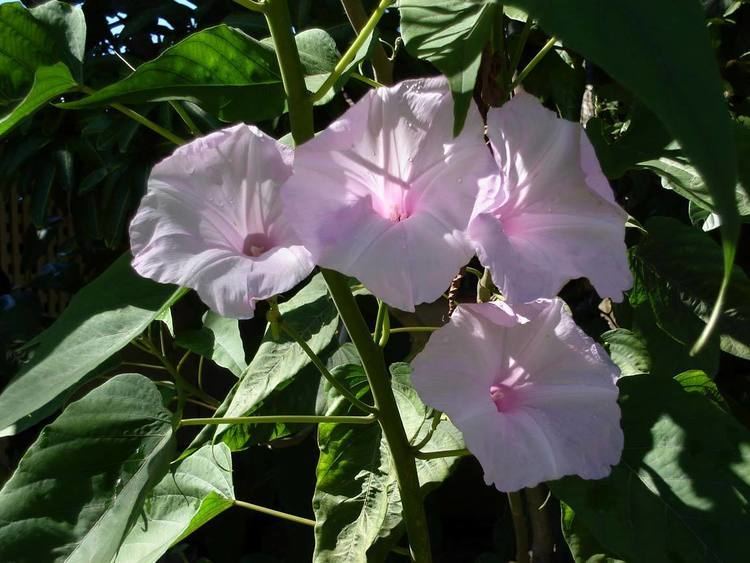 | ||
Lower classifications Sweet potato, Ipomoea purpurea, Ipomoea nil, Water spinach, Ipomoea tricolor Similar Ipomoea nil, Ipomoea purpurea, Ipomoea tricolor | ||
Ipomoea indica blue dawn flower morning glory
Ipomoea (/ˌɪpəˈmiːə, -poʊ-/) is the largest genus in the flowering plant family Convolvulaceae, with over 500 species. It is a large and diverse group with common names including morning glory, water convolvulus or kangkung, sweet potato, bindweed, moonflower, etc.
Contents
- Ipomoea indica blue dawn flower morning glory
- Ipomoea alba
- Uses and ecology
- As medicine and entheogen
- Pests and diseases
- References
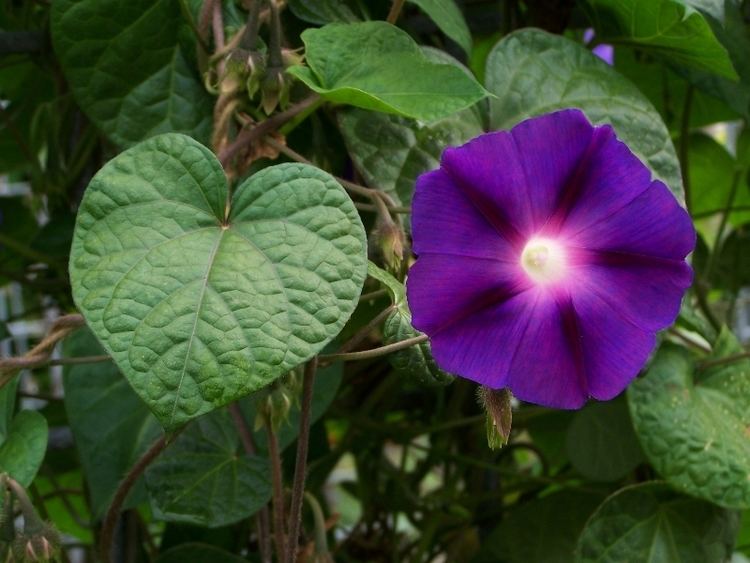
The most widespread common name is morning glories, but there are also species in related genera bearing the same common name. Those formerly separated in Calonyction (Greek καλός, kalos, good and νύκτα, nycta, night) are called moonflowers. The generic name is derived from the Greek words ιπς (ips) or ιπος (ipos), meaning "worm" or "bindweed," and όμοιος (homoios), meaning "resembling". It refers to their twining habit. The genus occurs throughout the tropical and subtropical regions of the world, and comprises annual and perennial herbaceous plants, lianas, shrubs and small trees; most of the species are twining climbing plants.
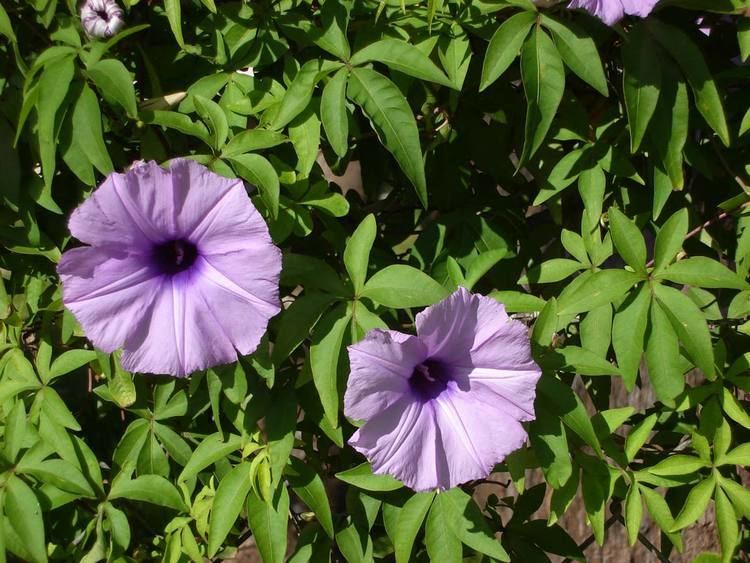
Ipomoea alba
Uses and ecology
Human use of Ipomoea include:
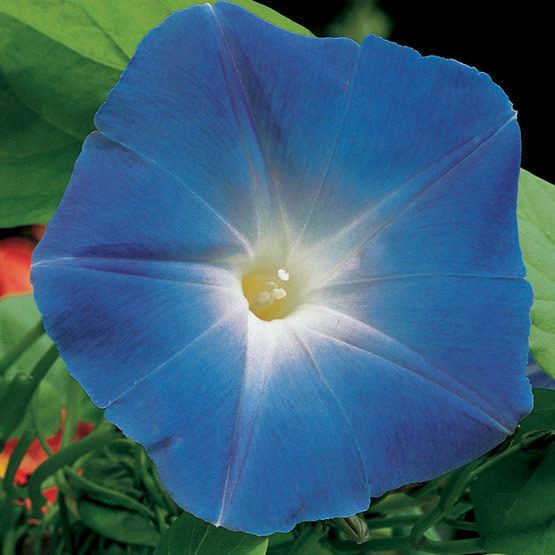
As medicine and entheogen

Humans use Ipomoea for their content of medical and psychoactive compounds, mainly alkaloids. Some species are renowned for their properties in folk medicine and herbalism; for example Vera Cruz jalap (I. jalapa) and Tampico jalap (I. simulans) are used to produce jalap, a cathartic preparation accelerating the passage of stool. Kiribadu Ala (giant potato, I. mauritiana) is one of the many ingredients of chyawanprash, the ancient Ayurvedic tonic called "the elixir of life" for its wide-ranging properties.
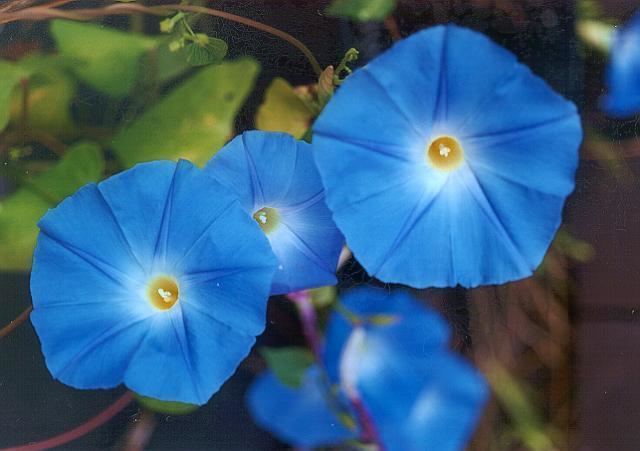
The leaves of I. batatas are eaten as a vegetable, and have been shown to slow oxygenation of LDLs, with some similar potential health benefits to green tea and grape polyphenols.
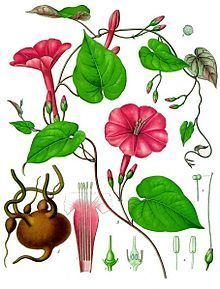
Other species were and still are used as potent entheogens. Seeds of Mexican morning glory (tlitliltzin, I. tricolor) were thus used by Aztecs and Zapotecs in shamanistic and priestly divination rituals, and at least by the former also as a poison, to give the victim a "horror trip" (see also Aztec entheogenic complex). Beach moonflower (I. violacea) was also used thus, and the cultivars called 'Heavenly Blue Morning Glory', touted today for their psychoactive properties, seem to represent an indeterminable assembly of hybrids of these two species.
Ergoline derivatives (lysergamides) are probably responsible for the entheogenic activity. Ergine (LSA), isoergine, D-lysergic acid N-(α-hydroxyethyl)amide and lysergol have been isolated from I. tricolor, I. violacea and/or purple morning glory (I. purpurea); although these are often assumed to be the cause of the plants' effects, this is not supported by scientific studies, which show although they are psychoactive, they are not notably hallucinogenic. Alexander Shulgin in TiHKAL suggests ergonovine is responsible, instead. It has verified psychoactive properties, though as yet other undiscovered lysergamides possibly are present in the seeds.
Though most often noted as "recreational" drugs, the lysergamides are also of medical importance. Ergonovine enhances the action of oxytocin, used to still post partum bleeding. Ergine induces drowsiness and a relaxed state and might be useful in treating anxiety disorder. Whether Ipomoea species are a useful source of these compounds remains to be determined. In any case, in some jurisdictions certain Ipomoea are regulated, e.g. by the Louisiana State Act 159 which bans cultivation of I. violacea except for ornamental purposes.
Pests and diseases
Many herbivores avoid morning glories such as Ipomoea, as the high alkaloid content makes these plants unpalatable, if not toxic. Nonetheless, Ipomoea species are used as food plants by the caterpillars of certain Lepidoptera (butterflies and moths); see list of Lepidoptera which feed on Ipomoea. For a selection of diseases of the sweet potato (I. batatas), many of which also infect other members of this genus, see List of sweet potato diseases.
